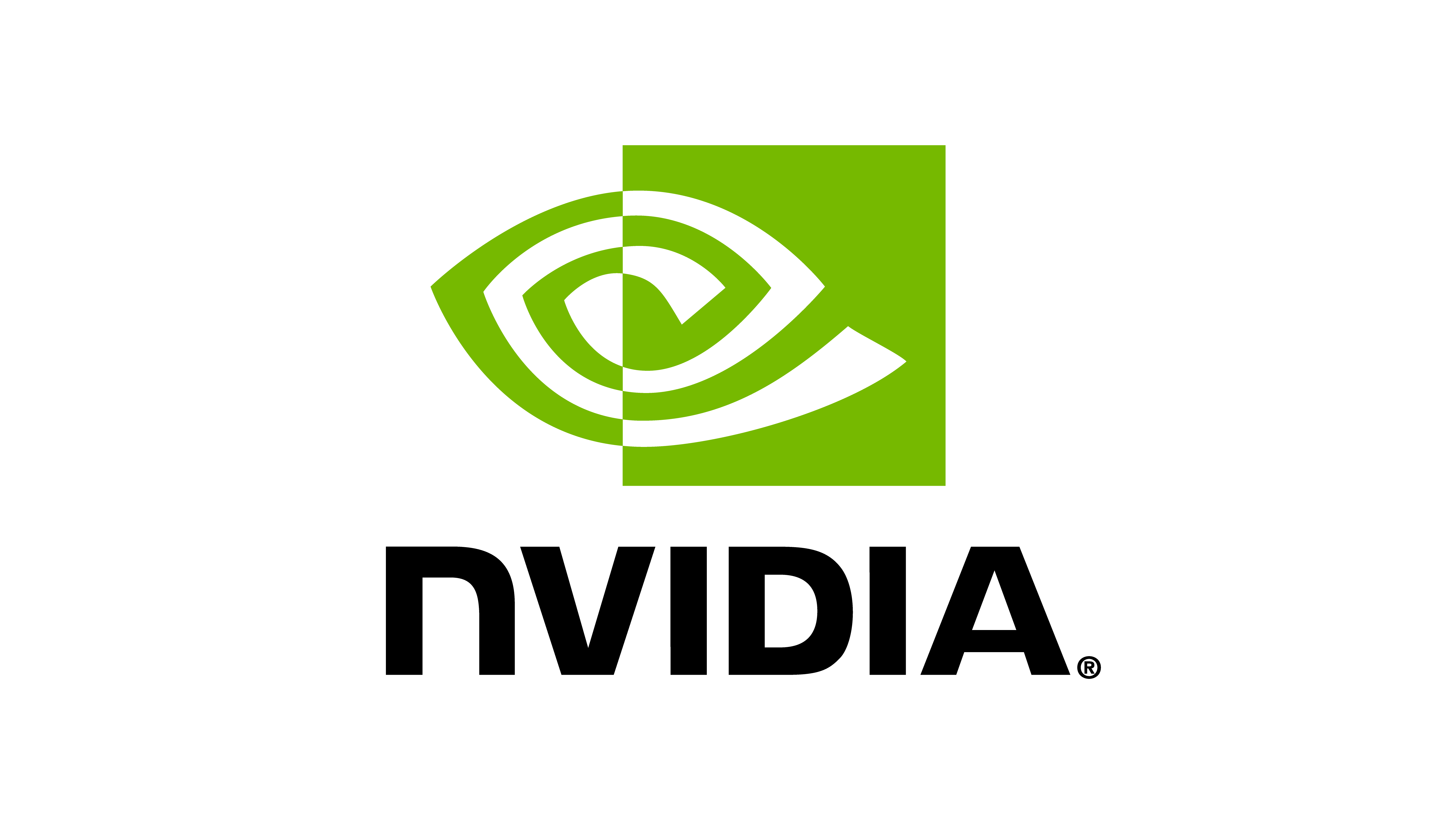# Copyright (c) 2022-2025, The Isaac Lab Project Developers.
# All rights reserved.
#
# SPDX-License-Identifier: BSD-3-Clause
from __future__ import annotations
import asyncio
import os
import weakref
from datetime import datetime
from typing import TYPE_CHECKING
import omni.kit.app
import omni.kit.commands
import omni.usd
from pxr import PhysxSchema, Sdf, Usd, UsdGeom, UsdPhysics
from omni.isaac.lab.ui.widgets import ManagerLiveVisualizer
if TYPE_CHECKING:
import omni.ui
from ..manager_based_env import ManagerBasedEnv
[文档]class BaseEnvWindow:
"""Window manager for the basic environment.
This class creates a window that is used to control the environment. The window
contains controls for rendering, debug visualization, and other environment-specific
UI elements.
Users can add their own UI elements to the window by using the `with` context manager.
This can be done either be inheriting the class or by using the `env.window` object
directly from the standalone execution script.
Example for adding a UI element from the standalone execution script:
>>> with env.window.ui_window_elements["main_vstack"]:
>>> ui.Label("My UI element")
"""
[文档] def __init__(self, env: ManagerBasedEnv, window_name: str = "IsaacLab"):
"""Initialize the window.
Args:
env: The environment object.
window_name: The name of the window. Defaults to "IsaacLab".
"""
# store inputs
self.env = env
# prepare the list of assets that can be followed by the viewport camera
# note that the first two options are "World" and "Env" which are special cases
self._viewer_assets_options = [
"World",
"Env",
*self.env.scene.rigid_objects.keys(),
*self.env.scene.articulations.keys(),
]
# Listeners for environment selection changes
self._ui_listeners: list[ManagerLiveVisualizer] = []
print("Creating window for environment.")
# create window for UI
self.ui_window = omni.ui.Window(
window_name, width=400, height=500, visible=True, dock_preference=omni.ui.DockPreference.RIGHT_TOP
)
# dock next to properties window
asyncio.ensure_future(self._dock_window(window_title=self.ui_window.title))
# keep a dictionary of stacks so that child environments can add their own UI elements
# this can be done by using the `with` context manager
self.ui_window_elements = dict()
# create main frame
self.ui_window_elements["main_frame"] = self.ui_window.frame
with self.ui_window_elements["main_frame"]:
# create main stack
self.ui_window_elements["main_vstack"] = omni.ui.VStack(spacing=5, height=0)
with self.ui_window_elements["main_vstack"]:
# create collapsable frame for simulation
self._build_sim_frame()
# create collapsable frame for viewer
self._build_viewer_frame()
# create collapsable frame for debug visualization
self._build_debug_vis_frame()
with self.ui_window_elements["debug_frame"]:
with self.ui_window_elements["debug_vstack"]:
self._visualize_manager(title="Actions", class_name="action_manager")
self._visualize_manager(title="Observations", class_name="observation_manager")
def __del__(self):
"""Destructor for the window."""
# destroy the window
if self.ui_window is not None:
self.ui_window.visible = False
self.ui_window.destroy()
self.ui_window = None
"""
Build sub-sections of the UI.
"""
def _build_sim_frame(self):
"""Builds the sim-related controls frame for the UI."""
# create collapsable frame for controls
self.ui_window_elements["sim_frame"] = omni.ui.CollapsableFrame(
title="Simulation Settings",
width=omni.ui.Fraction(1),
height=0,
collapsed=False,
style=omni.isaac.ui.ui_utils.get_style(),
horizontal_scrollbar_policy=omni.ui.ScrollBarPolicy.SCROLLBAR_AS_NEEDED,
vertical_scrollbar_policy=omni.ui.ScrollBarPolicy.SCROLLBAR_ALWAYS_ON,
)
with self.ui_window_elements["sim_frame"]:
# create stack for controls
self.ui_window_elements["sim_vstack"] = omni.ui.VStack(spacing=5, height=0)
with self.ui_window_elements["sim_vstack"]:
# create rendering mode dropdown
render_mode_cfg = {
"label": "Rendering Mode",
"type": "dropdown",
"default_val": self.env.sim.render_mode.value,
"items": [member.name for member in self.env.sim.RenderMode if member.value >= 0],
"tooltip": "Select a rendering mode\n" + self.env.sim.RenderMode.__doc__,
"on_clicked_fn": lambda value: self.env.sim.set_render_mode(self.env.sim.RenderMode[value]),
}
self.ui_window_elements["render_dropdown"] = omni.isaac.ui.ui_utils.dropdown_builder(**render_mode_cfg)
# create animation recording box
record_animate_cfg = {
"label": "Record Animation",
"type": "state_button",
"a_text": "START",
"b_text": "STOP",
"tooltip": "Record the animation of the scene. Only effective if fabric is disabled.",
"on_clicked_fn": lambda value: self._toggle_recording_animation_fn(value),
}
self.ui_window_elements["record_animation"] = omni.isaac.ui.ui_utils.state_btn_builder(
**record_animate_cfg
)
# disable the button if fabric is not enabled
self.ui_window_elements["record_animation"].enabled = not self.env.sim.is_fabric_enabled()
def _build_viewer_frame(self):
"""Build the viewer-related control frame for the UI."""
# create collapsable frame for viewer
self.ui_window_elements["viewer_frame"] = omni.ui.CollapsableFrame(
title="Viewer Settings",
width=omni.ui.Fraction(1),
height=0,
collapsed=False,
style=omni.isaac.ui.ui_utils.get_style(),
horizontal_scrollbar_policy=omni.ui.ScrollBarPolicy.SCROLLBAR_AS_NEEDED,
vertical_scrollbar_policy=omni.ui.ScrollBarPolicy.SCROLLBAR_ALWAYS_ON,
)
with self.ui_window_elements["viewer_frame"]:
# create stack for controls
self.ui_window_elements["viewer_vstack"] = omni.ui.VStack(spacing=5, height=0)
with self.ui_window_elements["viewer_vstack"]:
# create a number slider to move to environment origin
# NOTE: slider is 1-indexed, whereas the env index is 0-indexed
viewport_origin_cfg = {
"label": "Environment Index",
"type": "button",
"default_val": self.env.cfg.viewer.env_index + 1,
"min": 1,
"max": self.env.num_envs,
"tooltip": "The environment index to follow. Only effective if follow mode is not 'World'.",
}
self.ui_window_elements["viewer_env_index"] = omni.isaac.ui.ui_utils.int_builder(**viewport_origin_cfg)
# create a number slider to move to environment origin
self.ui_window_elements["viewer_env_index"].add_value_changed_fn(self._set_viewer_env_index_fn)
# create a tracker for the camera location
viewer_follow_cfg = {
"label": "Follow Mode",
"type": "dropdown",
"default_val": 0,
"items": [name.replace("_", " ").title() for name in self._viewer_assets_options],
"tooltip": "Select the viewport camera following mode.",
"on_clicked_fn": self._set_viewer_origin_type_fn,
}
self.ui_window_elements["viewer_follow"] = omni.isaac.ui.ui_utils.dropdown_builder(**viewer_follow_cfg)
# add viewer default eye and lookat locations
self.ui_window_elements["viewer_eye"] = omni.isaac.ui.ui_utils.xyz_builder(
label="Camera Eye",
tooltip="Modify the XYZ location of the viewer eye.",
default_val=self.env.cfg.viewer.eye,
step=0.1,
on_value_changed_fn=[self._set_viewer_location_fn] * 3,
)
self.ui_window_elements["viewer_lookat"] = omni.isaac.ui.ui_utils.xyz_builder(
label="Camera Target",
tooltip="Modify the XYZ location of the viewer target.",
default_val=self.env.cfg.viewer.lookat,
step=0.1,
on_value_changed_fn=[self._set_viewer_location_fn] * 3,
)
def _build_debug_vis_frame(self):
"""Builds the debug visualization frame for various scene elements.
This function inquires the scene for all elements that have a debug visualization
implemented and creates a checkbox to toggle the debug visualization for each element
that has it implemented. If the element does not have a debug visualization implemented,
a label is created instead.
"""
# create collapsable frame for debug visualization
self.ui_window_elements["debug_frame"] = omni.ui.CollapsableFrame(
title="Scene Debug Visualization",
width=omni.ui.Fraction(1),
height=0,
collapsed=False,
style=omni.isaac.ui.ui_utils.get_style(),
horizontal_scrollbar_policy=omni.ui.ScrollBarPolicy.SCROLLBAR_AS_NEEDED,
vertical_scrollbar_policy=omni.ui.ScrollBarPolicy.SCROLLBAR_ALWAYS_ON,
)
with self.ui_window_elements["debug_frame"]:
# create stack for debug visualization
self.ui_window_elements["debug_vstack"] = omni.ui.VStack(spacing=5, height=0)
with self.ui_window_elements["debug_vstack"]:
elements = [
self.env.scene.terrain,
*self.env.scene.rigid_objects.values(),
*self.env.scene.articulations.values(),
*self.env.scene.sensors.values(),
]
names = [
"terrain",
*self.env.scene.rigid_objects.keys(),
*self.env.scene.articulations.keys(),
*self.env.scene.sensors.keys(),
]
# create one for the terrain
for elem, name in zip(elements, names):
if elem is not None:
self._create_debug_vis_ui_element(name, elem)
def _visualize_manager(self, title: str, class_name: str) -> None:
"""Checks if the attribute with the name 'class_name' can be visualized. If yes, create vis interface.
Args:
title: The title of the manager visualization frame.
class_name: The name of the manager to visualize.
"""
if hasattr(self.env, class_name) and class_name in self.env.manager_visualizers:
manager = self.env.manager_visualizers[class_name]
if hasattr(manager, "has_debug_vis_implementation"):
self._create_debug_vis_ui_element(title, manager)
else:
print(
f"ManagerLiveVisualizer cannot be created for manager: {class_name}, has_debug_vis_implementation"
" does not exist"
)
else:
print(f"ManagerLiveVisualizer cannot be created for manager: {class_name}, Manager does not exist")
"""
Custom callbacks for UI elements.
"""
def _toggle_recording_animation_fn(self, value: bool):
"""Toggles the animation recording."""
if value:
# log directory to save the recording
if not hasattr(self, "animation_log_dir"):
# create a new log directory
log_dir = datetime.now().strftime("%Y-%m-%d_%H-%M-%S")
self.animation_log_dir = os.path.join(os.getcwd(), "recordings", log_dir)
# start the recording
_ = omni.kit.commands.execute(
"StartRecording",
target_paths=[("/World", True)],
live_mode=True,
use_frame_range=False,
start_frame=0,
end_frame=0,
use_preroll=False,
preroll_frame=0,
record_to="FILE",
fps=0,
apply_root_anim=False,
increment_name=True,
record_folder=self.animation_log_dir,
take_name="TimeSample",
)
else:
# stop the recording
_ = omni.kit.commands.execute("StopRecording")
# save the current stage
stage = omni.usd.get_context().get_stage()
source_layer = stage.GetRootLayer()
# output the stage to a file
stage_usd_path = os.path.join(self.animation_log_dir, "Stage.usd")
source_prim_path = "/"
# creates empty anon layer
temp_layer = Sdf.Find(stage_usd_path)
if temp_layer is None:
temp_layer = Sdf.Layer.CreateNew(stage_usd_path)
temp_stage = Usd.Stage.Open(temp_layer)
# update stage data
UsdGeom.SetStageUpAxis(temp_stage, UsdGeom.GetStageUpAxis(stage))
UsdGeom.SetStageMetersPerUnit(temp_stage, UsdGeom.GetStageMetersPerUnit(stage))
# copy the prim
Sdf.CreatePrimInLayer(temp_layer, source_prim_path)
Sdf.CopySpec(source_layer, source_prim_path, temp_layer, source_prim_path)
# set the default prim
temp_layer.defaultPrim = Sdf.Path(source_prim_path).name
# remove all physics from the stage
for prim in temp_stage.TraverseAll():
# skip if the prim is an instance
if prim.IsInstanceable():
continue
# if prim has articulation then disable it
if prim.HasAPI(UsdPhysics.ArticulationRootAPI):
prim.RemoveAPI(UsdPhysics.ArticulationRootAPI)
prim.RemoveAPI(PhysxSchema.PhysxArticulationAPI)
# if prim has rigid body then disable it
if prim.HasAPI(UsdPhysics.RigidBodyAPI):
prim.RemoveAPI(UsdPhysics.RigidBodyAPI)
prim.RemoveAPI(PhysxSchema.PhysxRigidBodyAPI)
# if prim is a joint type then disable it
if prim.IsA(UsdPhysics.Joint):
prim.GetAttribute("physics:jointEnabled").Set(False)
# resolve all paths relative to layer path
omni.usd.resolve_paths(source_layer.identifier, temp_layer.identifier)
# save the stage
temp_layer.Save()
# print the path to the saved stage
print("Recording completed.")
print(f"\tSaved recorded stage to : {stage_usd_path}")
print(f"\tSaved recorded animation to: {os.path.join(self.animation_log_dir, 'TimeSample_tk001.usd')}")
print("\nTo play the animation, check the instructions in the following link:")
print(
"\thttps://docs.omniverse.nvidia.com/extensions/latest/ext_animation_stage-recorder.html#using-the-captured-timesamples"
)
print("\n")
# reset the log directory
self.animation_log_dir = None
def _set_viewer_origin_type_fn(self, value: str):
"""Sets the origin of the viewport's camera. This is based on the drop-down menu in the UI."""
# Extract the viewport camera controller from environment
vcc = self.env.viewport_camera_controller
if vcc is None:
raise ValueError("Viewport camera controller is not initialized! Please check the rendering mode.")
# Based on origin type, update the camera view
if value == "World":
vcc.update_view_to_world()
elif value == "Env":
vcc.update_view_to_env()
else:
# find which index the asset is
fancy_names = [name.replace("_", " ").title() for name in self._viewer_assets_options]
# store the desired env index
viewer_asset_name = self._viewer_assets_options[fancy_names.index(value)]
# update the camera view
vcc.update_view_to_asset_root(viewer_asset_name)
def _set_viewer_location_fn(self, model: omni.ui.SimpleFloatModel):
"""Sets the viewport camera location based on the UI."""
# access the viewport camera controller (for brevity)
vcc = self.env.viewport_camera_controller
if vcc is None:
raise ValueError("Viewport camera controller is not initialized! Please check the rendering mode.")
# obtain the camera locations and set them in the viewpoint camera controller
eye = [self.ui_window_elements["viewer_eye"][i].get_value_as_float() for i in range(3)]
lookat = [self.ui_window_elements["viewer_lookat"][i].get_value_as_float() for i in range(3)]
# update the camera view
vcc.update_view_location(eye, lookat)
def _set_viewer_env_index_fn(self, model: omni.ui.SimpleIntModel):
"""Sets the environment index and updates the camera if in 'env' origin mode."""
# access the viewport camera controller (for brevity)
vcc = self.env.viewport_camera_controller
if vcc is None:
raise ValueError("Viewport camera controller is not initialized! Please check the rendering mode.")
# store the desired env index, UI is 1-indexed
vcc.set_view_env_index(model.as_int - 1)
# notify additional listeners
for listener in self._ui_listeners:
listener.set_env_selection(model.as_int - 1)
"""
Helper functions - UI building.
"""
def _create_debug_vis_ui_element(self, name: str, elem: object):
"""Create a checkbox for toggling debug visualization for the given element."""
from omni.kit.window.extensions import SimpleCheckBox
with omni.ui.HStack():
# create the UI element
text = (
"Toggle debug visualization."
if elem.has_debug_vis_implementation
else "Debug visualization not implemented."
)
omni.ui.Label(
name.replace("_", " ").title(),
width=omni.isaac.ui.ui_utils.LABEL_WIDTH - 12,
alignment=omni.ui.Alignment.LEFT_CENTER,
tooltip=text,
)
has_cfg = hasattr(elem, "cfg") and elem.cfg is not None
is_checked = False
if has_cfg:
is_checked = (hasattr(elem.cfg, "debug_vis") and elem.cfg.debug_vis) or (
hasattr(elem, "debug_vis") and elem.debug_vis
)
self.ui_window_elements[f"{name}_cb"] = SimpleCheckBox(
model=omni.ui.SimpleBoolModel(),
enabled=elem.has_debug_vis_implementation,
checked=is_checked,
on_checked_fn=lambda value, e=weakref.proxy(elem): e.set_debug_vis(value),
)
omni.isaac.ui.ui_utils.add_line_rect_flourish()
# Create a panel for the debug visualization
if isinstance(elem, ManagerLiveVisualizer):
self.ui_window_elements[f"{name}_panel"] = omni.ui.Frame(width=omni.ui.Fraction(1))
if not elem.set_vis_frame(self.ui_window_elements[f"{name}_panel"]):
print(f"Frame failed to set for ManagerLiveVisualizer: {name}")
# Add listener for environment selection changes
if isinstance(elem, ManagerLiveVisualizer):
self._ui_listeners.append(elem)
async def _dock_window(self, window_title: str):
"""Docks the custom UI window to the property window."""
# wait for the window to be created
for _ in range(5):
if omni.ui.Workspace.get_window(window_title):
break
await self.env.sim.app.next_update_async()
# dock next to properties window
custom_window = omni.ui.Workspace.get_window(window_title)
property_window = omni.ui.Workspace.get_window("Property")
if custom_window and property_window:
custom_window.dock_in(property_window, omni.ui.DockPosition.SAME, 1.0)
custom_window.focus()

